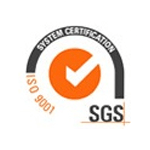Understand the welding knowledge of spiral steel pipe

Burn-through and hydrogen-induced cracking in spiral steel pipe welding are hot topics at home and abroad. There are many influencing factors of these problems, including spiral steel pipe body, pre-weld treatment, welding process and post-weld treatment.
(1) Spiral steel pipe body
1 wall thickness
It is generally believed that the wall thickness of the spiral steel pipe exceeds 6.4 mm to minimize the thickness of the fire-through. ASME has carried out research on the minimum wall thickness of gas pipelines. Considering the factors of burn-through, it is concluded that the minimum wall thickness of spiral steel pipe is related to gas flow rate and internal pressure. Under a certain tube pressure, the minimum wall thickness of the spiral steel pipe decreases with the increase of the gas flow rate; when the gas flow rate is constant, the minimum wall thickness of the pipe decreases with the increase of the internal pressure of the pipe. The specific wall thickness data is shown in Table 1.1:
WA Bruce et al. have shown that when limiting heat input, pipes with wall thicknesses greater than 3.2 mm are less prone to burn through [16]. William Jarvis et al. studied that the minimum wall thickness acceptable for hot-slot online welding is 4.8 mm. When the wall thickness of the spiral steel tube is less than 4 mm, a reasonable welding process can ensure successful welding [17].
Influence of the thickness of spiral steel pipe on welding quality
The SY/T 6554-2003 standard specifies that the minimum thickness of the base metal recommended for most welds is 4.8 mm. Considering the burn-through factor, the actual base material minimum wall thickness is the strength design wall thickness plus the safety margin (usually 2.4mm).
2 medium flow rate
If the medium flow rate is too fast, it will take more heat generated during welding, enhance the heat dissipation of the spiral steel pipe wall, increase the tendency of the welded joint to harden, and easily induce hydrogen-induced cracking; if the medium flow rate is too slow, heat will be concentrated, causing burn-through. . Therefore, the media flow rate should be reasonable to avoid the occurrence of online welding problems.
In foreign countries, foreign countries do not specify the medium flow rate at the standard level. The literature states: 1) Higher medium flow rate will remove heat more quickly and reduce the possibility of burn-through; 2) Reasonable medium flow rate can reduce burn-through and hydrogen-induced The possibility of cracking. In the domestic aspect, there is an enterprise standard that the flow rate of the liquid medium in the pipe does not exceed 2 m/s or the flow rate of the gas medium does not exceed 7 m/s. The welding can be carried out after Sun Hua [18] studies that the flow rate of the liquid medium is not more than 5 m/ s; the gas medium flow rate is not more than 10m / s. Yang Jingshun [19] thought that when welding welded pipe fittings on spiral steel pipes, there should be some restrictions on the flow velocity of the medium in the pipes. The medium flow rate must ensure that the welding process can meet the requirements of relevant technical regulations. It can be seen that the domestic side has studied the medium flow rate but there is no unified statement.
Classification navigation:
1、Alloy steel pipe 2、Stainless steel tube 3、Stainless steel welded pipe 4、Reducing pipe
5、High Pressure Thick Wall Pipe Fitting 6、Elbow 7、Flange 8、Spigot Pipe Fitting
9、Tee 10、Tube Cap 11、Pipe Fitting













